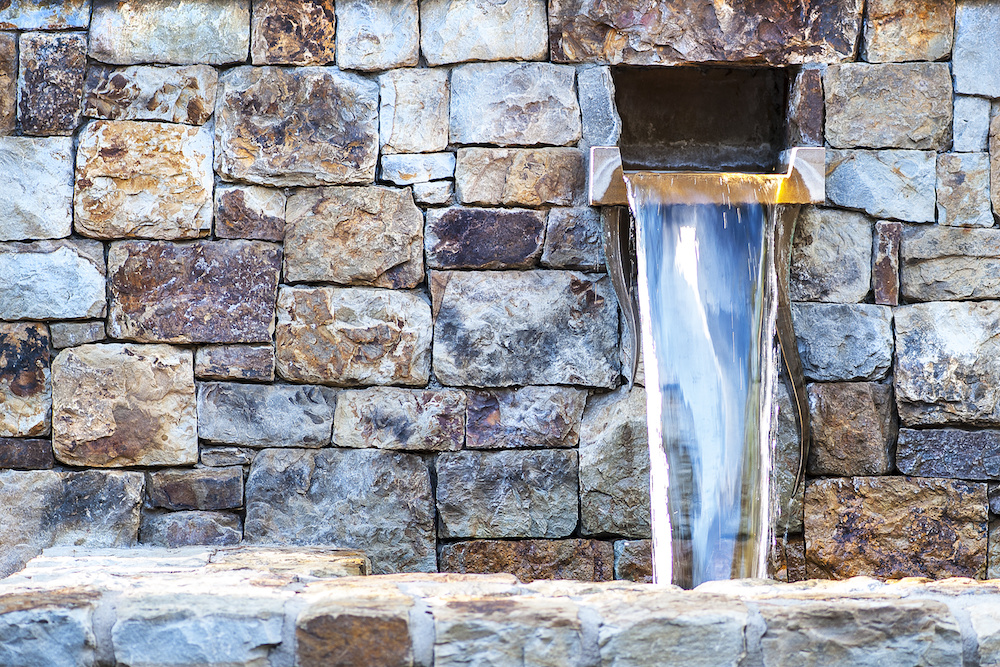There are many reasons why stone is the best material for building a water feature in Ulster County - durability, versatility, a stunning natural appearance, elegance, beauty, and of course the gentle sound of water running over it. If you are still deciding which type of stone suits your project, visit our masonry supply and hand-pick your options for a water feature. Here is what you can expect:
Granite
Granite is an incredibly dense natural stone. Its toughness, durability, and water resistant properties make it ideal for water features. This hard, compact, igneous rock is one of the densest stone available. Its density makes it relatively non-porous, which means that the water feature can be left uncovered outdoors all year round. It also means that the water contained in the feature will not have an effect on the stone. Other advantages of granite include its high stain resistance and easy maintenance. Granite can be cleaned with a dilute solution without causing any damage.
Granite's beauty and organic elegance are perfect for any style of water feature. Granite adds a luxurious touch to any fountain, pond, waterfall or pool deck.
Related: NY Contractors: Try these Natural Paving Stones from Unilock
Cast Stone
Many water features are made from cast stone. This man-made material is a mix of pigments and crushed stone, in particular, limestone cement. The crushed stone is then molded into a water feature, usually a fountain. Cast stone is a cheaper option than natural stone, but will wear down quicker than dense stone such as granite. Cast stone is relatively porous and won’t necessarily provide a unique appearance, as it is limited to what mold forms are available. With natural stone such as granite, limestone, travertine or sandstone, on the other hand, the water feature is automatically a one-of-a-kind structure with authentic veining and natural texture.
Related: Natural Stone Retaining Walls as Landscape Features
Limestone and Sandstone
Limestone and sandstone are also used for constructing fountains and pool decking. Limestone is widely used for interior and exterior cladding. This sedimentary rock is formed in warm marine waters and offers a variety of colors, including greys, creamy tans, and silvery blues.
Sandstone tiles are also perfect for swimming pool surrounds as they are exceptionally hard-wearing and offer a natural surface texture.
Related: Natural Stone Retaining Walls as Landscape Features
Vermont Slate
A type of flagstone, Vermont slate is a relatively heavy and durable stone with a traditional appearance. It can be cut into tiles of different lengths and widths which are easy to install. Slate offers a wide color palette of warm browns, bold reds, purples, blues, greys, and greens. US quarries are known for producing high-quality, attractive and long lasting slate that will accentuate a water feature.
Landscape Boulders
Boulders are excellent for creating tropical-style waterfalls and streams. Because of their weight, however, they are not suitable for every landscape. As a substitute, many contractors use artificial boulders that are lighter in weight, easier to use, and cheaper to transport. The disadvantage of artificial boulders being that they are not quite as long-lasting or durable in comparison with real stone that can stand outdoors for decades without any discoloration or cracks.


